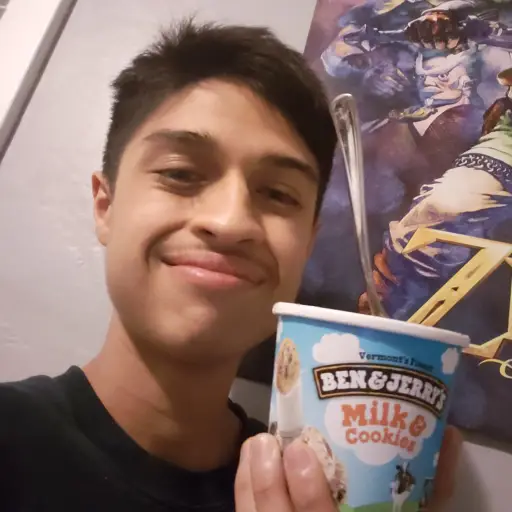In the 1930s, during the early age of Hollywood, many filmmakers began adapting classic literature for the big screen. Notably, one of the adapted literary genres was horror. Audiences can see the beginnings of the horror genre in Universal Studios’ early monster films “Dracula,” “Frankenstein,” and “The Wolfman.” Decades later, creators in the ‘60s started producing horror films that placed humans in suspenseful situations, resulting in classics such as “Rosemary’s Baby,” Psycho” and “Night of the Living Dead.” After Hollywood lifted the Hay’s Code in 1968, the genre evolved into franchises that became famous for their gory content. These included the successful ‘70s franchises “Texas Chainsaw Massacre,” “Halloween” and “Jaws.”
In the 2000s to mid-2010s, Hollywood failed to maintain this level of success. Even though many stand-out horror films were released during this period, they were considered the exception rather than the rule. Thanks to the genre’s cheap production budget, horror films were used as a quick cash grab to keep Hollywood studios in business. This period of mediocre horror films persisted until last year.
In 2022, audiences were overwhelmed by an influx of exceptional horror films. Fans of the genre felt as though studios finally became aware of their interest in high-quality horror movies. Social media was a factor in this horror renaissance; audiences excitedly posted about these movies, which increased their popularity and influenced others to watch them. However, what has truly made these movies successful is how they incorporate other genres, such as comedy, and modernize classic horror themes and tropes.
When someone watches a perfect horror film, they generally want to recommend it to their peers. However, sharing these films can be difficult since their intense content is not enjoyable for everyone. According to YouGovAmerica, horror is considered the most divisive genre, with 45% of people disliking or hating it. In contrast, comedy movies are widely loved. Unlike horror, comedy allows people to laugh and relate to the characters on screen. Incorporating comedy as a subgenre in horror films can make the movies appeal to more people. Three recent releases followed this format: Halina Reijn’s “Bodies Bodies Bodies,” Mark Mylod’s “The Menu” and Gerard Johnstone’s “M3GAN.”
“Bodies Bodies Bodies”
“Bodies Bodies Bodies” follows a group of 20-year-olds trapped in a mansion overnight due to a hurricane. They pass the time by playing a murder mystery game, but the game becomes real when they find one of their friends dead. The remaining survivors must discover the killer before they become the next victims. Along the way, the group begins to reveal their true opinions about one another, which increases their suspicions of the murderer being among their group. The movie falls into the comedy genre by satirizing Gen-Z; “Bodies Bodies Bodies” can be described as “Mean Girls” meets “Lord of the Flies.” Like “Mean Girls,” the film is quotable, as it mocks Gen-Z’s use of language. Characters make statements such as “he’s a libra moon” or “I’m an ally.” This humor contrasts with the peril of their situation, as the group begins to turn on each other, “Lord of the Flies”-style. Comedy and horror converge as the group struggles to find the murderer and survive the night.
“The Menu”
This combination of comedy and horror is seen again in “The Menu,” which satirizes the 1%. Instead of a mansion, the characters are trapped on an uninhabited island and must try to escape from becoming part of Chef Slowik’s (Ralph Fiennes) deadly menu. The movie is filled with jokes at the expense of the 1%; the film shows how they appreciate exorbitantly expensive meals and are ignorant to the effects of their dreadful actions in the real world. For instance, food critic Lillian (Janet McTeer) admires a tortilla but realizes that the image burnt onto it depicts a restaurant that had to shut down after she gave it a bad review.
“The Menu” stands apart from other sociopolitical satires for its use of traditional horror elements to explore the theme of social class. The movie has gore and a final girl, and its main character, Margot (Anya Taylor Joy), uses the villain’s weakness to defeat him. The complicated relationship between Margot, a working-class citizen, and Chef Slowik explores themes of privilege. Through constant word of mouth on social media, the film became the most-streamed movie on any platform the week it debuted on HBO Max.
“M3GAN”
As for “M3GAN,” the film recaptures campy horror by exaggerating the titular creepy killer doll. When Universal Pictures released the trailer, people were quick to make the doll into a meme on social media. A clip of M3GAN doing a gymnastics dance routine before slashing her next victim with a blade went viral. Many users recreated the dance routine on TikTok. When the film was finally released in theaters, “M3GAN” met audience expectations with its over-the-top comedy. In one such scene, the doll performs a cover of David Guetta and Sia’s “Titanium” to stop her assigned companion, Katie (Violet McGraw), from feeling sad. “M3GAN” is a film that stands out for its campy mix of comedy and modernized horror tropes.
The ‘X’ Trilogy
The horror renaissance is built upon the success of other films within the genre. Modern directors draw upon classic horror themes to inspire and tell their own original stories. This applies to the critical success of the first two installments in Ti West’s “X” trilogy, the movies “X” and “Pearl.” “X” features an all-star ensemble cast, including Mia Goth and Brittany Snow. The movie borrows heavily from “Texas Chainsaw Massacre” in terms of its aesthetic, setting and kills. Both films follow a group traveling across Texas in a van, who encounters an unusual social group that hunts them down.
Audiences are entranced by the conflict between Mia Goth’s characters, Maxine and Pearl. Even though they grew up in different times, both share the same dream of becoming stars. “Pearl” is the second installment in the trilogy and the prequel to “X.” The movie humanizes the titular villain by revealing the reason for her uncontrollably violent actions; it is shown that Maxine is living Pearl’s dream by making adult films. The movie pays homage to both the Golden Age of Hollywood and the classic psychological horror films of the 1960s and ‘70s. Like “M3GAN,” it also became popular on social media. Many users on TikTok recreated Pearl’s “I am a star” sequence and dressed as the character for Halloween.
Jordan Peele similarly draws from film history in his latest movie, “Nope.” The movie recaptures the story structure of Steven Spielberg’s “Jaws” and the science fiction of “E.T: the Extra-Terrestrial” and “Close-Encounters of the Third Kind.” Moreover, “Nope” uses the classic technique of not fully revealing the monster until the movie’s climax, when the characters attempt to kill it. Though Peele incorporates these inspirations, he makes “Nope” his own by using the horror genre to portray a social message. In this case, the film presents people’s obsession with capturing spectacles to gain fame, despite putting themselves at risk. Similar to the reception of Peele’s other movies, it gained many awards and was elected as one of the American Film Institute (AFI)’s top ten films of 2022.
These films are only a small sample of the horror films that were released in 2022, and an even smaller part of the current horror renaissance. There is also Park Finn’s financially successful “Smile” and Damien Loone’s “Terrifier 2,” each of which surpassed their break-even numbers at the box office. Upcoming horror films, including Tyler Gillett and Matt Bettinelli-Olpin’s “Scream 6” and Chris Mckay’s “Renfield,” are eagerly anticipated by fans and critics. Let’s hope these films are just the beginning of a lasting horror renaissance.

















